CURIOSITY
A brief history of unicorns
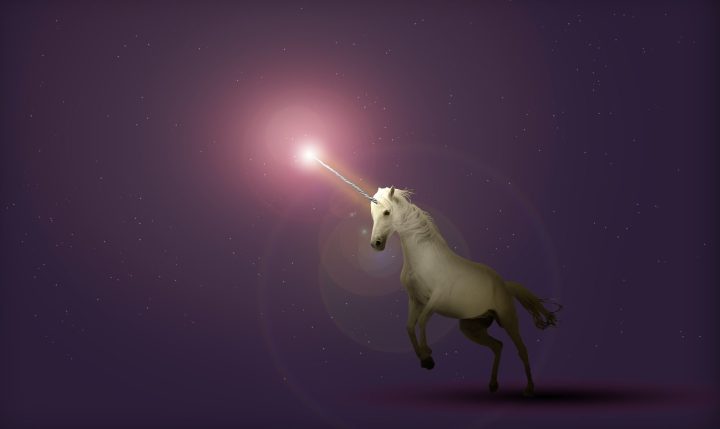
Humans apparently have a strong need for unicorns and have been searching for them for more than 2,000 years.
Are there unicorns? There are, it seems, but they’re always elsewhere. A good place to begin is with the Greek Ctesias of Cnidus, who noted their existence in India. Writing in the 4th century, he established the archetype; they were, he said, a type of wild ass as large as a horse or larger.
“Their bodies are white, their heads dark red, their eyes dark blue. They have a horn on the forehead which is about a foot and a half in length. Those who drink out of these horns, made into drinking vessels, are not subject to convulsions or to the holy disease (epilepsy). Indeed they are immune even to poisons.”
My information on unicorns came from a dog rescue centre in Hout Bay, Cape Town – not the sort of place you’d expect to be educated about mysterious beasts. But DARG has a terrific second-hand bookshop. There I found what is probably a very obscure book – from its condition seemingly unread – The Natural History of Unicorns by Chris Lavers, a geography lecturer who also wrote Why Elephants Have Big Ears. He clearly has an insatiable curiosity for oddities.
Far from frivolous and dismissive, Unicorns is an extremely dense, scholarly text about an obscure obsession, not only by Lavers but by many people throughout history. By way of introduction – and to save you a long, complex read if you ever find a copy – here’s a brief sketch (thank you, Chris, you tied me to my armchair for a solid week).
What a unicorn looks like depends on your context.
A Christian background will give you a gentle, goatlike animal, generally in the presence of a beautiful maiden. With a more secular tradition, you’ll have a noble beast facing a lion across a coat of arms. In Africa, a unicorn is more likely to be a fearsome forest thing. If your parents were hippies it will be a magical airbrushed beast amid twinkling crystals. But somehow it’s always something and always with that startling, single horn.
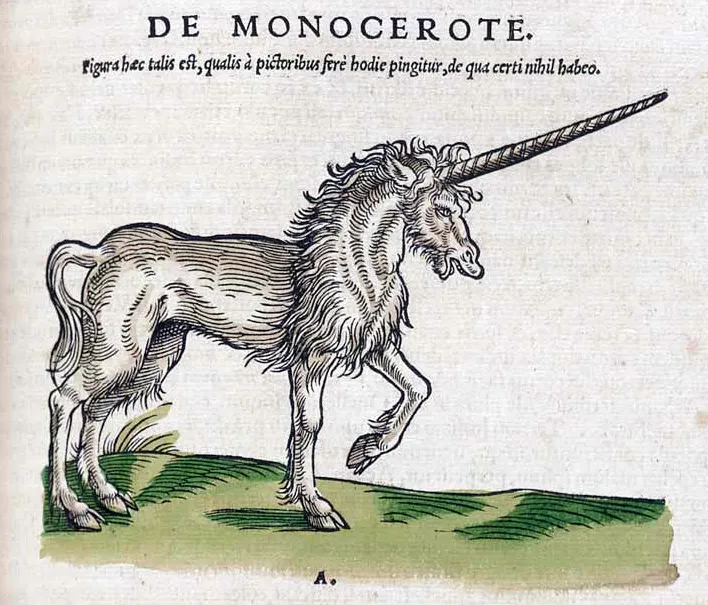
Historical illustration of a Unicorn. This illustration is from the 1551 book ‘Historiae Animalium’ by the Swiss naturalist and bibliographer Konrad Gessner. Image: Historiae animalium 1551 in De Monocerote. Image: Wikimedia Commons
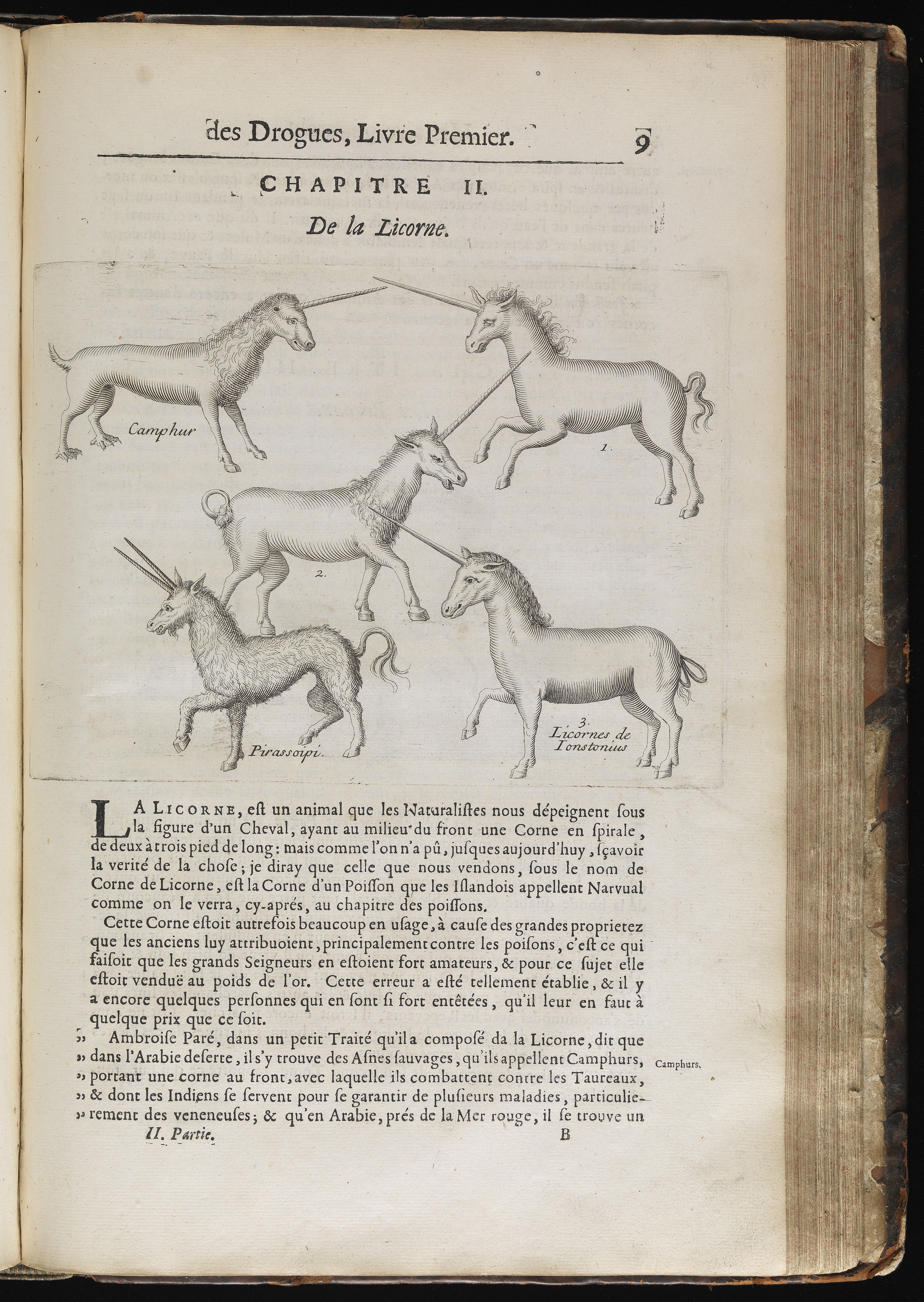
Chapter II, De la Licorne (Unicorns). Image: Wellcome Library, London / Wellcome Images.
In 1930 the US professor, poet and politician Odell Shepard produced a scholarly analysis of Ctesias’ unicorn and came up with three possibilities.
It could have been an Indian rhino, but that has a horn on its nose, not forehead. It may have been a Tibetan chiru, which has two horns but may have been glimpsed when both horns lined up, or it could have been an Indian ass, called a kiang, which fitted the size and shape but not the colouring. And of course no horn… but pointy ears. He toyed with the idea of a yak, but they don’t live in India. A lot of erudite scholarship that got nowhere…
Jumping back to antiquity, Aristotle spoke of an Indian ass with a single horn and Pliny the Elder, writing in the first century AD, went further: “In India the fiercest animal is the monoceros, which… resembles a horse but in the head a stag, in the feet an elephant and in the tail a boar and a single black horn three feet long projecting from the middle of the forehead.”
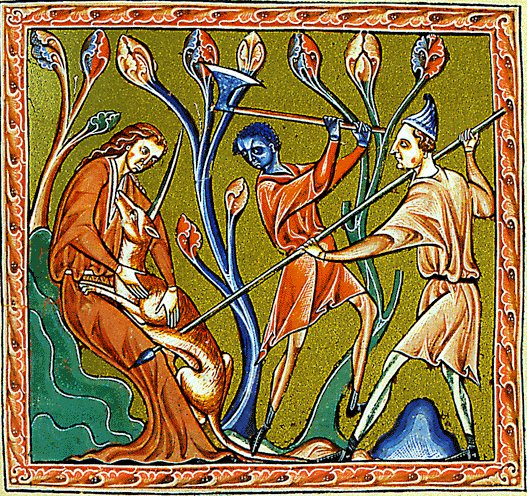
Unicorn Hunt. Image: The Ashmole Bestiary. Image: Wikimedia Commons
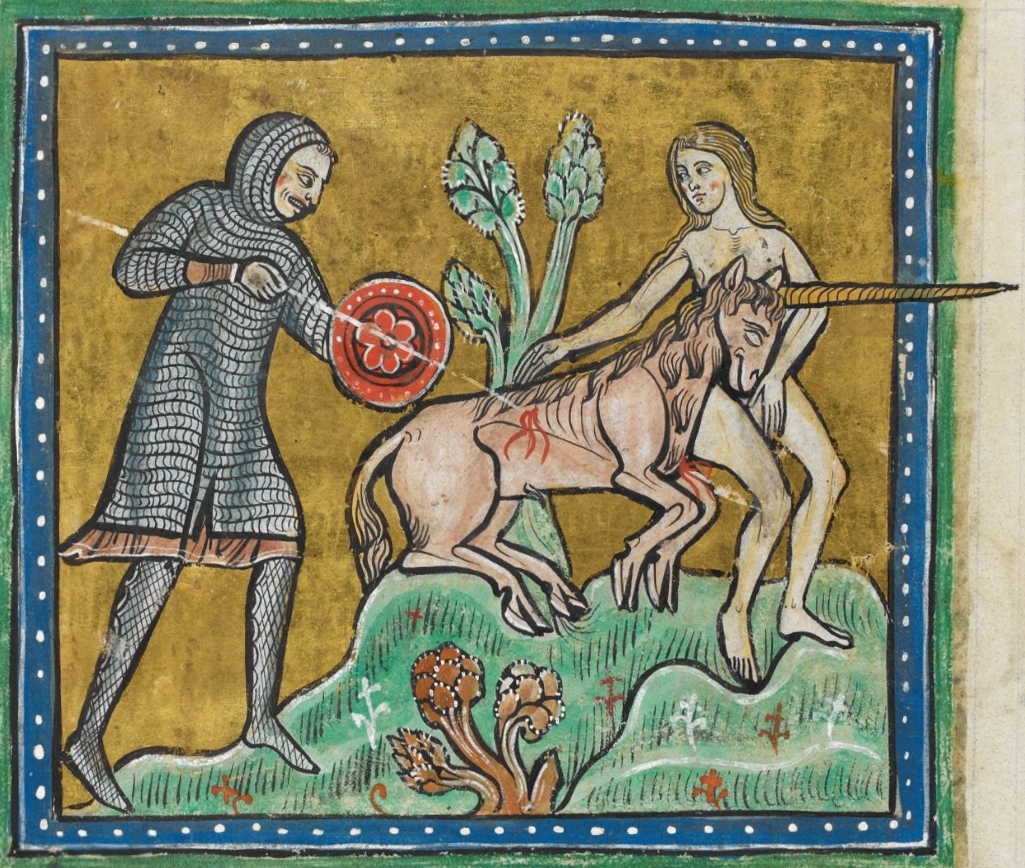
Unicorn hunt. Held and digitised by the British Library. Image: British Library / Wikimedia Commons

Dedication in Haggadah to King Gerorge VI in an illuminated Haggadah. Depicts the mythical scene of St. George attacking a dragon with his lance. In this, Szyk refers to himself as “Arthur Szyk illuminator of holland”. Image: Wikimedia Commons
A hundred years later an Italian, Claudius Aelianus, in his book On Animals, had his unicorn moment: “In India there is said to exist a one-horned beast they call Cartazonus. It is the size of a full-grown horse and has the mane of a horse. Between its eyebrows it has a horn growing out; it is not smooth but has rings/spirals.”
The translation of Mesopotamian cuneiform added a one-horned rimu to which warrior kings compared themselves.
The European explorer Evariste Huc “found” a chiru in Tibet and sent a 50cm horn to Calcutta. Its blood, he said, had medicinal virtues “and the horns are used in charlatanism”. It’s not known what became of it.
The Bible is littered with unicorns. In Numbers 23.22, God brought the people of Israel out of Egypt: “he hath as it were the strength of the unicorn.” There are unicorns in Deuteronomy 33.17, Psalms 22.21, Psalms 24.6 and Isiah 34.7.
The word has a Biblical history. In the ancient Hebrew text, it was a reem. In the Greek translation, it became monoceros; in the Latin version, unicornus and in the English translation, unicorn. Clearly, unicorns were of utmost importance to God, but difficult to observe in the wild. They were always, somehow, elsewhere.
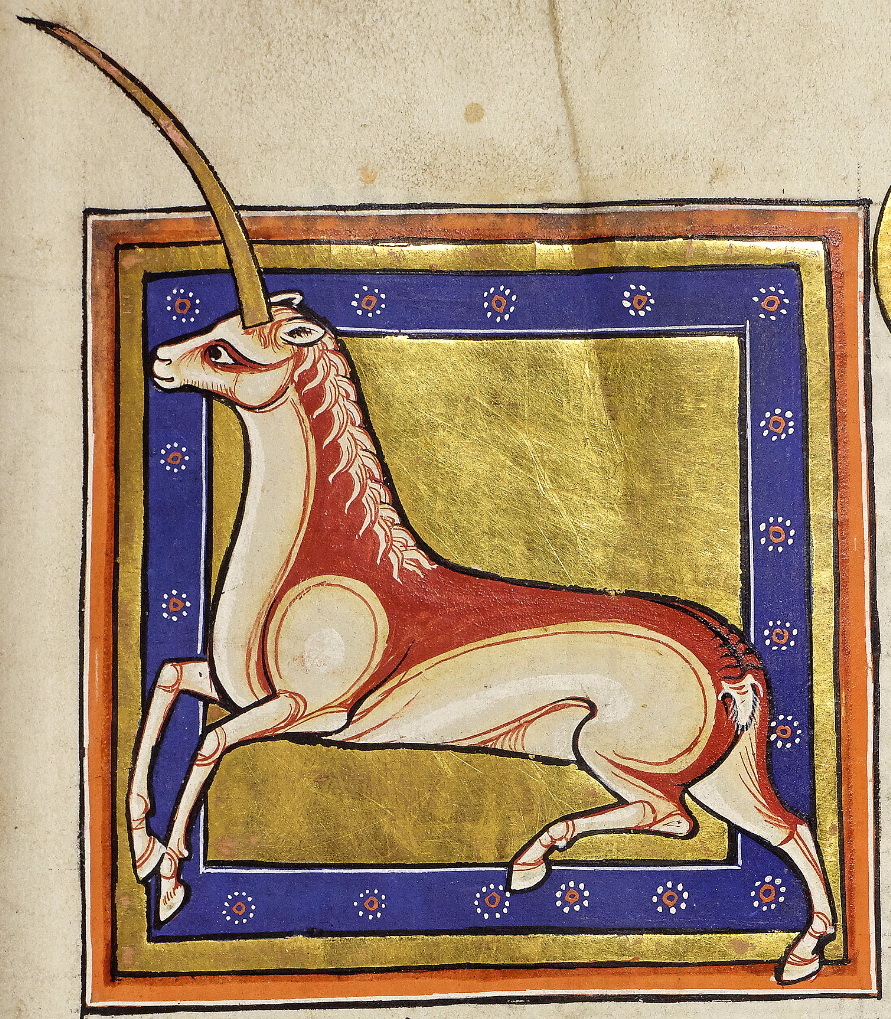
Monocerus – Horse-like monoserus with a large horn. Image: University of Aberdeen / Wikimedia Commons
In the second century AD, an unknown Christian wrote Physiologues, which became highly esteemed and translated from Greek into many languages. It contains instructions on how to capture a unicorn: “It is a very small animal like a kid, excessively swift with one horn in the middle of his forehead and no hunter can catch him. But it can be trapped. A virgin girl is led to where he lurks and there she is sent off herself into the woods. He soon leaps into her lap when he sees her and embraces her and hence gets caught.”
The medieval Verteuil Tapestries, done in around 1500, depict the hunting of a unicorn, but the stratagem is baying dogs. However, the maiden eventually arrives and the beast is captured as a creature of God.
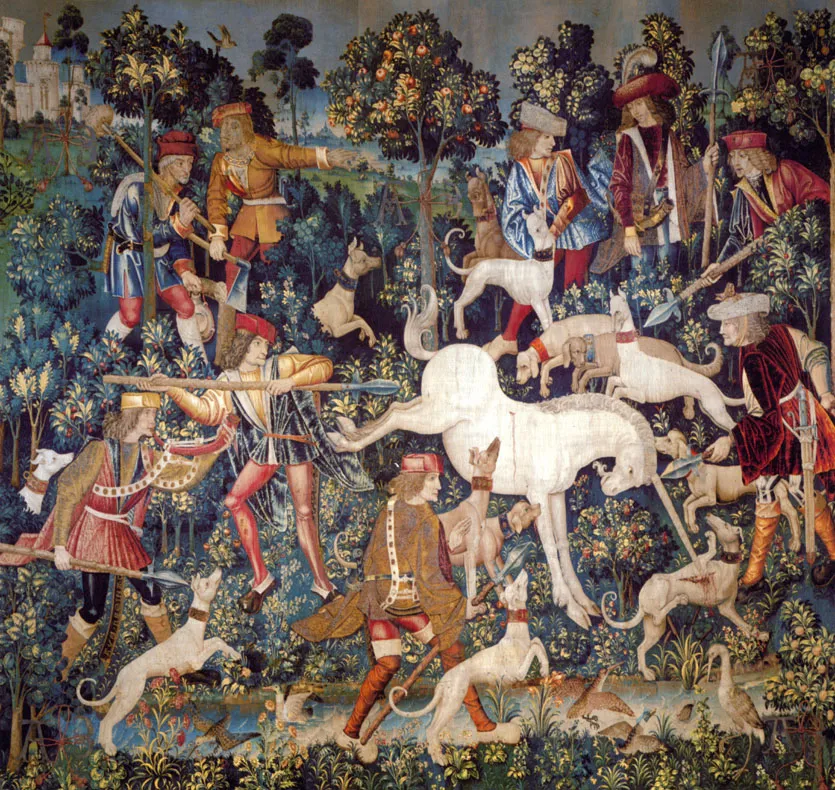
Unicorn at Bay, Hunt of the Unicorn Tapestries, c.1494-1505. Image: Wikimedia Commons
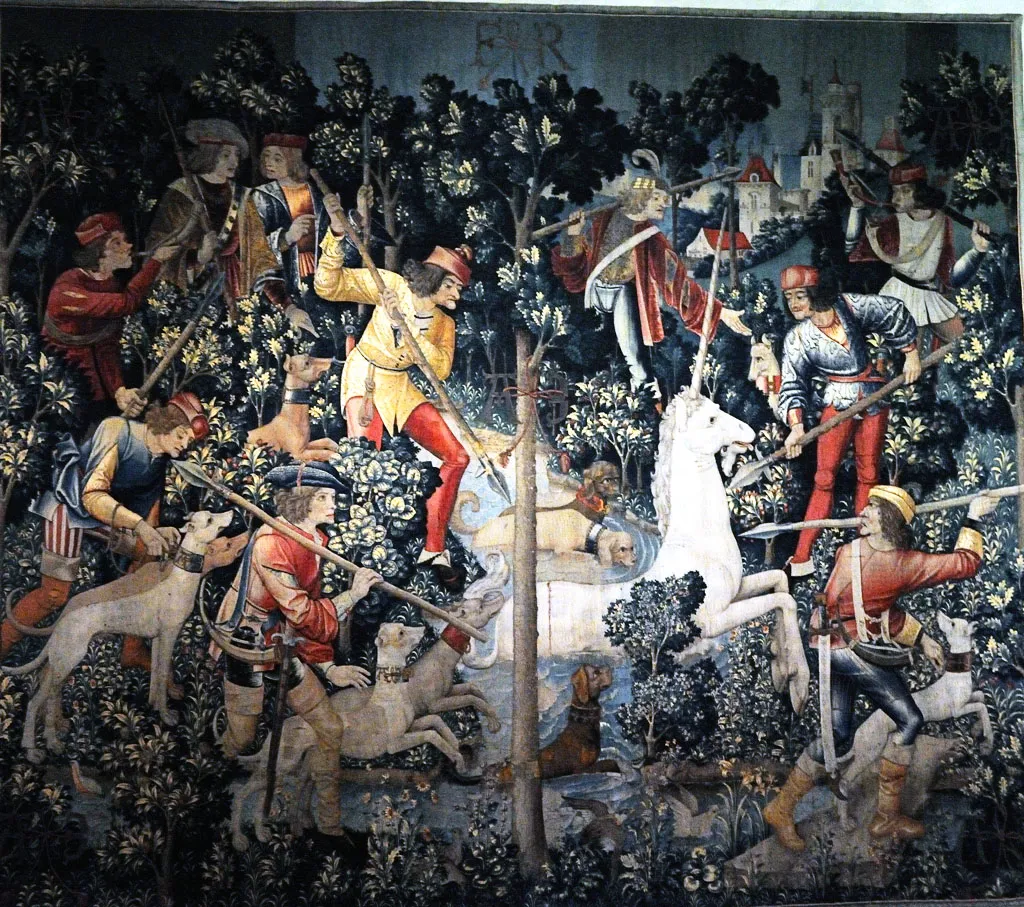
Unicorn at Bay, Hunt of the Unicorn Tapestries, c.1494-1505. Image: Wikimedia Commons
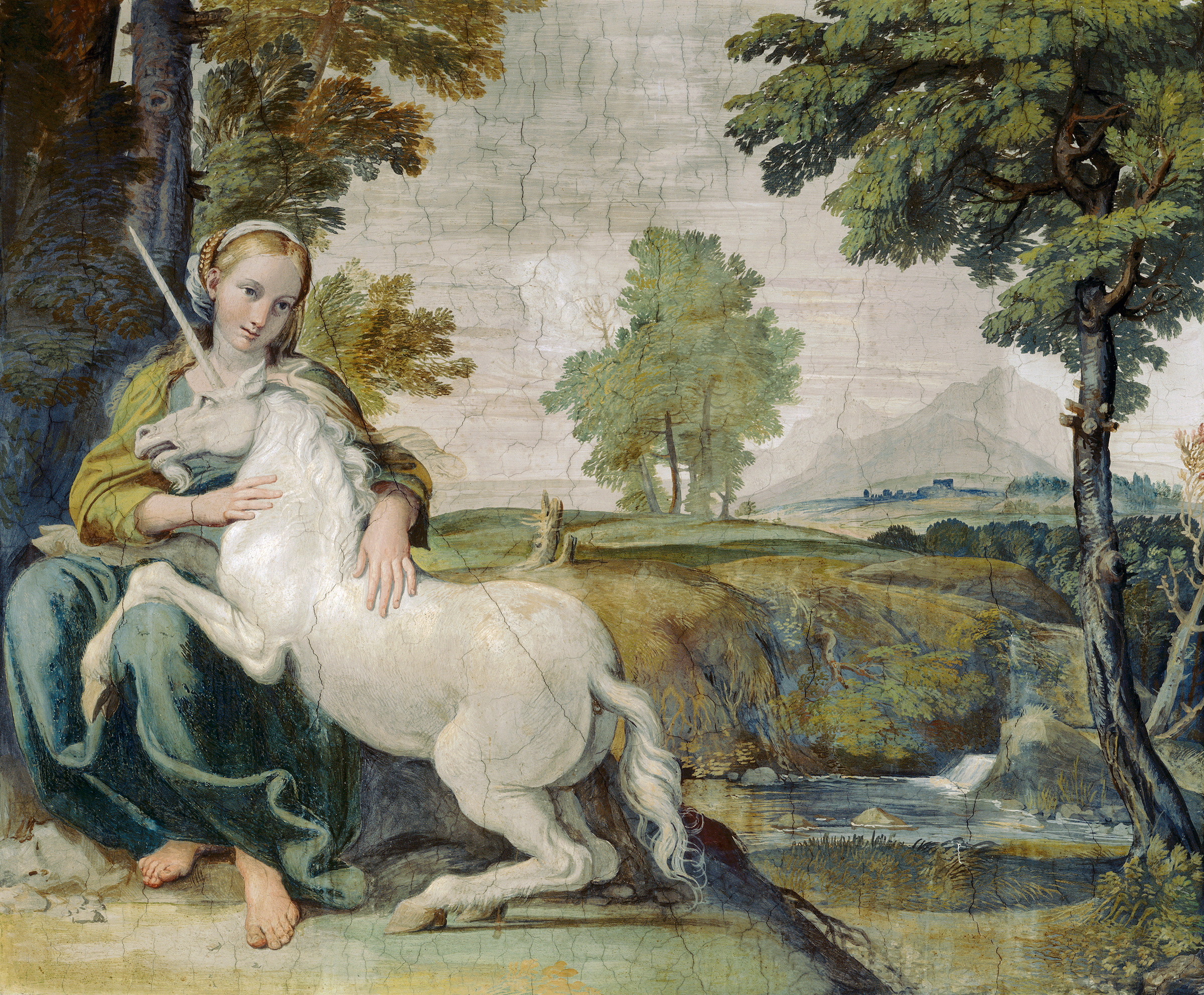
The Maiden and the Unicorn by Domenichino. ca. 1602 Image: © Alinari Archives / CORBIS
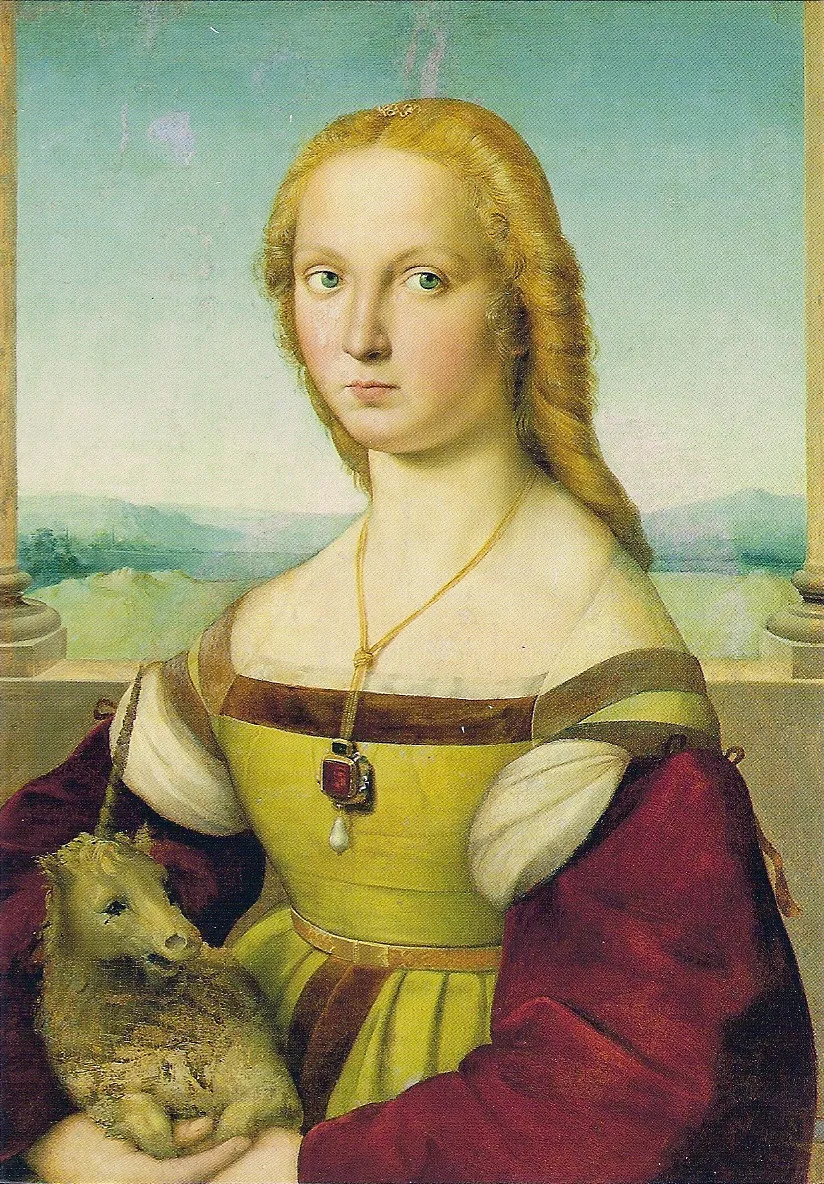
“Lady With A Unicorn” by Raffaello Sanzio, Raphael, 1506. Image: Supplied
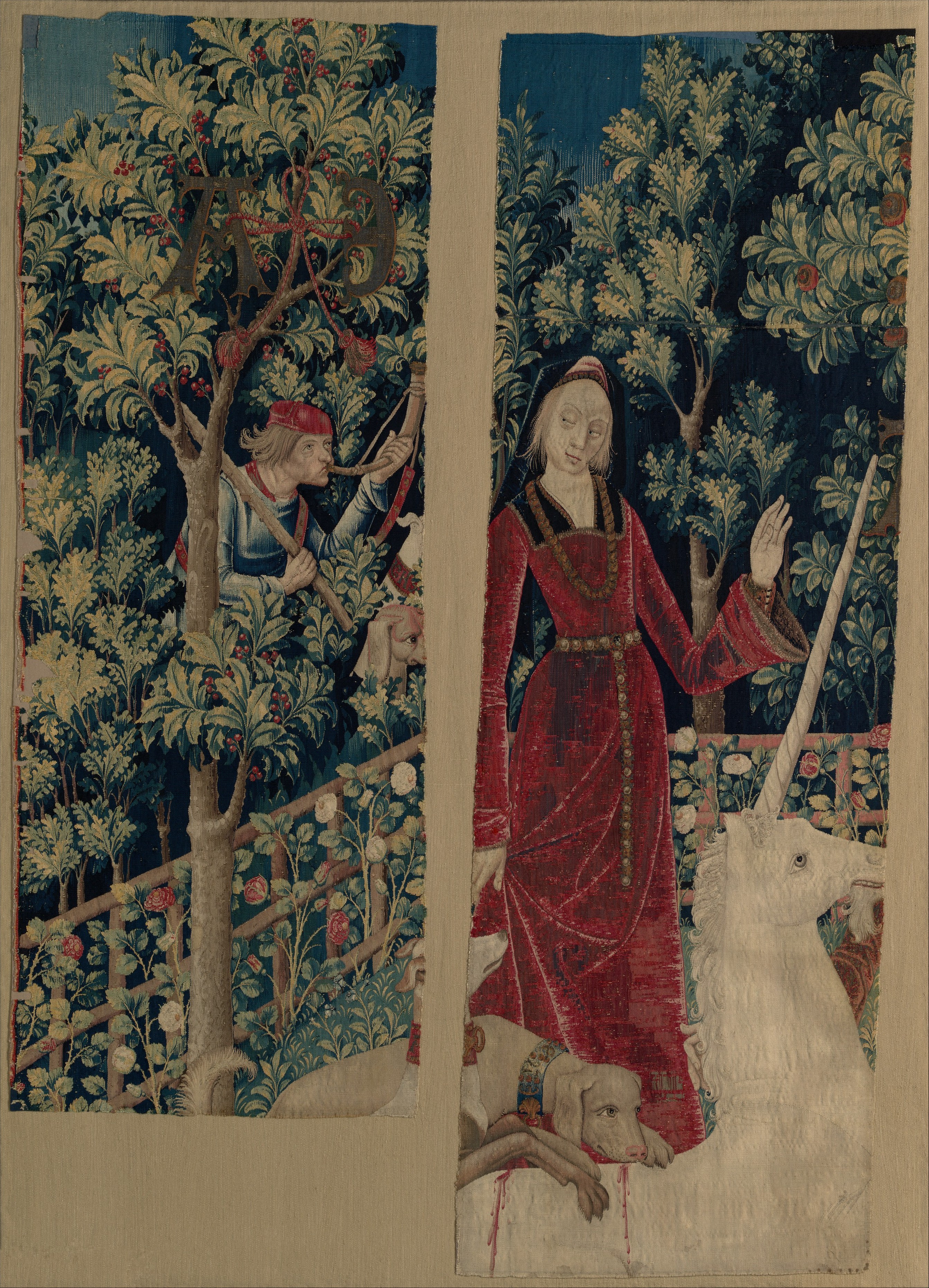
The Unicorn Surrenders to a Maiden (from the Unicorn Tapestries) 1495–1505. On view at The Met Cloisters in Gallery 17. Image: Metropolitan Museum of Art / Wikimedia Commons

(Toulouse) Le Vue (La Dame à la licorne) – Musée de Cluny Paris. Image: Supplied
Then, sensationally during the early Renaissance, unicorns were discovered. Their spectacular horns, made from a substance later termed alicorn, began circulating in Europe and commanding huge prices. In 1609, one was said to have been valued at half a city. The king of France owned one valued at £20,000 (many millions at today’s prices). The British royal family owned one assessed at £100,000.
Some were seven feet long, raising speculation about the great size of the beast that bore them. Alicorn, it was claimed, could detect poison by sweating in its presence. As a powder, it treated all manner of ailments.
Then, in the 1630s, the bubble burst. The Regius Professor of Denmark, Ole Worm, declared the horns to be the tusks of North Atlantic narwhals. Undeterred by truth, the mania continued for nearly 200 more years. Like gold, they were too valuable to devalue.
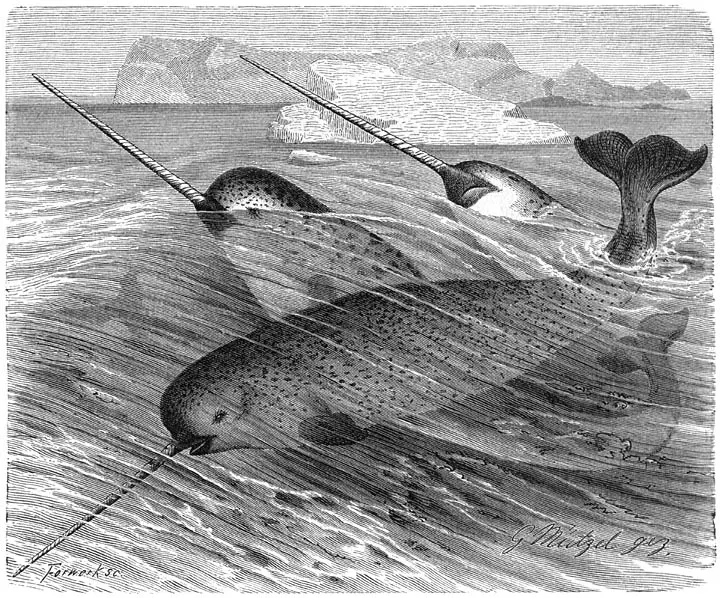
Illustration of Narwhals from “Life of Animals Part 1, Chapter 12: Sirens, Chapter 13: Walvisch-like” by AE Brehm. Image: Wikimedia Commons
As European explorers penetrated “unknown” Africa and South America, the search for the unicorn heated up. There was the mythical karkadann, the horn of which turned up in Mecca and sold for a thousand gold pieces. Was it the khutu? One writer, the Iranian scholar al-Biruni, suggested it may be the claw of a roc, a giant African bird that feasted on elephants. A description suggested it may have been a walrus tusk.
In 17th century Europe, the Enlightenment was dawning. The French scientist Georges Cuvier declared that, anatomically, a single horn on a mammal’s forehead was impossible. African adventurers weren’t interested. The Swedish naturalist Anders Sparrman said unicorns were common near the Cape of Good Hope and was presented with a horn. Meteorologist Sir Thomas Galton took testimony from Bushmen who reported a single-horned animal the size of a gemsbok.
Philip Goss of the Royal Society questioned a witness in Mozambique about the ndzoodzoo, which was about the size of a horse, had a single horn and was extremely swift. The horn, he was told, folded up when the animal was asleep. Explorer Dr Eduard Ruppell was told of herds of them in Sudan. In 1848, Louis Ducoret fleeced the French Service de Missions of thousands of francs to find one on the grassy plains around Lake Chad.
The final unicorn hunter was the British diplomat and explorer Sir Harry Hamilton Johnston, who headed a Royal Society scientific expedition to East Africa and assisted in setting up the Congo Free State for the Belgian King Leopold II. He was a linguist, painter, anatomist and explorer who headed diplomatic posts across Africa for 17 years. Throughout that time he was looking for a unicorn but never found one. Following his failure, all hope of finding unicorns evaporated. By the early 20th century the world was too well known.

Unicorn toys. Image: Alan Levine / Flickr
So, today the unicorn lives on in toy boxes and fantasy stories… But without doubt, it holds the record of the longest history of any mammal that never existed. DM/ ML
In case you missed it, also read ‘Siena and the horse race that drives locals wild’
[hearken id=”daily-maverick/9591″]



















Whatever one might say about the history or non-existence of the Unicorn, it is the national animal of Scotland. Others such as Wales and China have dragons, Greece the Phoenix, North Korea the pegasus – but definitely Scotland’s Unicorn is the coolest.